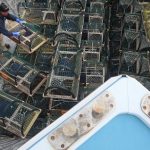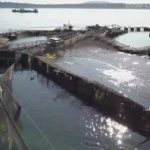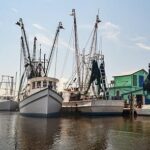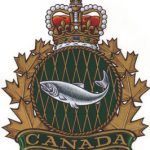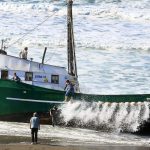Tag Archives: halibut
Landing Reports Indicate Violations in Alaska’s Restricted Fishing Area
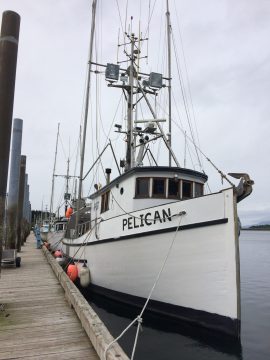 Halibut Fisherman, Andrew Halverson, a resident of Washington, was fined $5,000 for the unlawful harvest of halibut. The halibut were harvested from the closed waters defined in the Sitka Sound Local Area Management Plan (LAMP). An enforcement officer with NOAA’s Office of Law Enforcement initiated an investigation after he reviewed landing reports for the Sitka area. “OLE personnel regularly review landing reports,” said Lt. Bob Marvelle, supervisory enforcement officer for the OLE Alaska Division. “Since we’re unable to inspect every offload and landing, we review the reports to ensure compliance and identify areas of concern that need to be addressed.” Upon further investigation of the documents and log books, OLE identified that on Nov. 4, 2016, while fishing from a vessel larger than 35 feet, Halverson retained 130 pounds of halibut fished from approximately 4.3 nautical miles inside the Sitka LAMP closed area. continue reading the report here 08:05
Halibut Fisherman, Andrew Halverson, a resident of Washington, was fined $5,000 for the unlawful harvest of halibut. The halibut were harvested from the closed waters defined in the Sitka Sound Local Area Management Plan (LAMP). An enforcement officer with NOAA’s Office of Law Enforcement initiated an investigation after he reviewed landing reports for the Sitka area. “OLE personnel regularly review landing reports,” said Lt. Bob Marvelle, supervisory enforcement officer for the OLE Alaska Division. “Since we’re unable to inspect every offload and landing, we review the reports to ensure compliance and identify areas of concern that need to be addressed.” Upon further investigation of the documents and log books, OLE identified that on Nov. 4, 2016, while fishing from a vessel larger than 35 feet, Halverson retained 130 pounds of halibut fished from approximately 4.3 nautical miles inside the Sitka LAMP closed area. continue reading the report here 08:05
Commercial longline seasons to open March 11th, on time
 Commercial longliners in Alaska can go fishing on March 11 after all. The National Marine Fisheries Service announced Friday. March 3 that March 11th will be the start date for halibut and black cod fishing. March 11th is the halibut fishing start date approved by the International Pacific Halibut Commission back in January. The National Marine Fisheries Service typically opens long-line fishing for black cod on the same day. President Trump issued an executive order in January requiring that for every one new regulation issued, at least two prior regulations be identified for elimination. The start dates, catch share plan and other changes are all regulations that need to be published in the federal register. As of late last month, the National Marine Fisheries Service was still unsure of the impact of the presidential order on the fisheries. Fishermen in Alaska were questioning whether they’d be able to start fishing on that date. However, the federal agency confirmed Friday that the season would be starting on the 11th for both halibut and black cod. Read the rest here 08:52
Commercial longliners in Alaska can go fishing on March 11 after all. The National Marine Fisheries Service announced Friday. March 3 that March 11th will be the start date for halibut and black cod fishing. March 11th is the halibut fishing start date approved by the International Pacific Halibut Commission back in January. The National Marine Fisheries Service typically opens long-line fishing for black cod on the same day. President Trump issued an executive order in January requiring that for every one new regulation issued, at least two prior regulations be identified for elimination. The start dates, catch share plan and other changes are all regulations that need to be published in the federal register. As of late last month, the National Marine Fisheries Service was still unsure of the impact of the presidential order on the fisheries. Fishermen in Alaska were questioning whether they’d be able to start fishing on that date. However, the federal agency confirmed Friday that the season would be starting on the 11th for both halibut and black cod. Read the rest here 08:52
International Pacific Halibut Commission approves increases in halibut catch limits
 Most parts of the Pacific coastline will see an increase in commercial and charter fishing catch limits for halibut this year. The International Pacific Halibut Commission Friday approved a coast-wide catch limit of 31.4 million pounds of the valuable bottom fish. That’s an increase from just under 30 million pounds last year. Several parts of the coast were facing catch limit cuts based on alternatives presented by IPHC scientists. However, commissioners voted to boost harvest limits instead of making reductions. There was some disagreement about the BC catch limit this year. Listen to the audio report or read it here 19:11
Most parts of the Pacific coastline will see an increase in commercial and charter fishing catch limits for halibut this year. The International Pacific Halibut Commission Friday approved a coast-wide catch limit of 31.4 million pounds of the valuable bottom fish. That’s an increase from just under 30 million pounds last year. Several parts of the coast were facing catch limit cuts based on alternatives presented by IPHC scientists. However, commissioners voted to boost harvest limits instead of making reductions. There was some disagreement about the BC catch limit this year. Listen to the audio report or read it here 19:11
Craig Medred: Fish fight end?
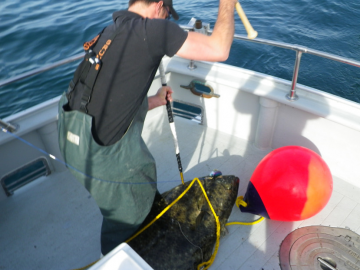 The North Pacific Fisheries Council has taken an unprecedented step to try to increase the value of halibut to the Alaska economy by allowing a yet-to-be-created, charter-boat fishing entity to buy fish from willing commercial fishing interests in order to boost sport harvests. Efforts to shift some of the halibut harvest back toward tourism businesses comes in the wake of a study indicating that “individual fishery quotas” created for the commercial halibut fishery in the early 1990s have not worked out quite as planned. A well-intentioned idea, IFQs (Eye-F-Cues) as everyone in the fishing industry calls them, were intended to shift halibut harvests away from big-boat operations toward individual fishermen working as owner-operators of fishing businesses hopefully based in Alaska. But that isn’t exactly how things turned out. Read the rest of the story here 10:58
The North Pacific Fisheries Council has taken an unprecedented step to try to increase the value of halibut to the Alaska economy by allowing a yet-to-be-created, charter-boat fishing entity to buy fish from willing commercial fishing interests in order to boost sport harvests. Efforts to shift some of the halibut harvest back toward tourism businesses comes in the wake of a study indicating that “individual fishery quotas” created for the commercial halibut fishery in the early 1990s have not worked out quite as planned. A well-intentioned idea, IFQs (Eye-F-Cues) as everyone in the fishing industry calls them, were intended to shift halibut harvests away from big-boat operations toward individual fishermen working as owner-operators of fishing businesses hopefully based in Alaska. But that isn’t exactly how things turned out. Read the rest of the story here 10:58
North Pacific Fishery Management Council allows sport guides to buy commercial halibut quota
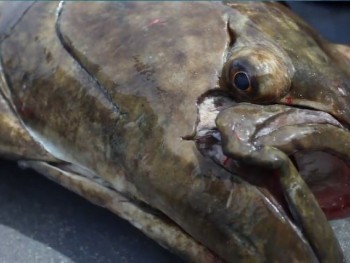 The North Pacific Fishery Management Council, master of the nation’s most valuable fishing region, decided on Dec. 10 to implement a new plan that in some ways reflects changing attitudes and economies in the North Pacific and in Alaska. The plan involves allowing guided recreational halibut fishermen to buy up commercial quota through a system called an RQE — a recreational quota entity. This differs from an existing program that allows sport guides to lease, but not buy, commercial quota. Commercial fishermen don’t welcome the change, and in fact see it as one more nail in the coffin of a historical Alaskan enterprise that is more expensive and more difficult to enter that it ever has been. Commercial fishermen think the RQE will usher in the absolute death of Southeast Alaska coastal village fleets in a matter of five years, all at the hands of the tourism behemoths that control more and more of the island economies. “This is the death of a small boat, owner-operator fishery. It’s over,” said Clem Tillion, a North Pacific fisheries fixture and longtime advocate for coastal quota ownership. “Holland America and Carnival (Cruise Line) will buy the quota and hired hands will fish it, and the small boat fleet out of villages is gone.” Read the article here 13:55
The North Pacific Fishery Management Council, master of the nation’s most valuable fishing region, decided on Dec. 10 to implement a new plan that in some ways reflects changing attitudes and economies in the North Pacific and in Alaska. The plan involves allowing guided recreational halibut fishermen to buy up commercial quota through a system called an RQE — a recreational quota entity. This differs from an existing program that allows sport guides to lease, but not buy, commercial quota. Commercial fishermen don’t welcome the change, and in fact see it as one more nail in the coffin of a historical Alaskan enterprise that is more expensive and more difficult to enter that it ever has been. Commercial fishermen think the RQE will usher in the absolute death of Southeast Alaska coastal village fleets in a matter of five years, all at the hands of the tourism behemoths that control more and more of the island economies. “This is the death of a small boat, owner-operator fishery. It’s over,” said Clem Tillion, a North Pacific fisheries fixture and longtime advocate for coastal quota ownership. “Holland America and Carnival (Cruise Line) will buy the quota and hired hands will fish it, and the small boat fleet out of villages is gone.” Read the article here 13:55
Atlantic Halibut under Council scrutiny as Maine’s catch increases
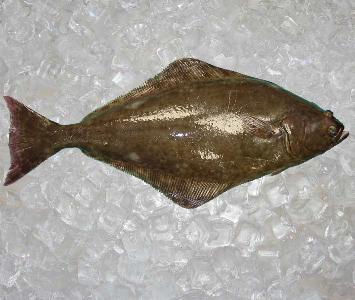 Federal fishing regulators say they are looking to change the way they manage Atlantic halibut in the wake of a surge in catch of the fish. The government lists Atlantic halibut as “overfished” and conservationists want to protect it. But many fishermen say the catch is up because the stock has been rebuilt over recent years. East Coast fishermen caught more than 215,000 pounds of Atlantic halibut in 2015 in the most productive year of fishing for the flatfish since 1972. Catch of the fish in nearshore Maine waters is helping drive the increase, regulators say. The regulatory New England Fishery Management Council decided last month to review management of halibut, which is popular with diners and chefs for its thick, meaty steaks. Exactly what form regulation changes could take isn’t yet known. We’ve identified that this is an issue, and this will be a priority for 2017,” Janice Plante, a spokeswoman for the council, said. Read the story here 08:35
Federal fishing regulators say they are looking to change the way they manage Atlantic halibut in the wake of a surge in catch of the fish. The government lists Atlantic halibut as “overfished” and conservationists want to protect it. But many fishermen say the catch is up because the stock has been rebuilt over recent years. East Coast fishermen caught more than 215,000 pounds of Atlantic halibut in 2015 in the most productive year of fishing for the flatfish since 1972. Catch of the fish in nearshore Maine waters is helping drive the increase, regulators say. The regulatory New England Fishery Management Council decided last month to review management of halibut, which is popular with diners and chefs for its thick, meaty steaks. Exactly what form regulation changes could take isn’t yet known. We’ve identified that this is an issue, and this will be a priority for 2017,” Janice Plante, a spokeswoman for the council, said. Read the story here 08:35
Halibut stock stable, flat harvest likely
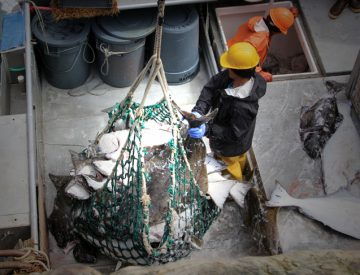 Stocks have stabilized and bycatch is as low as it’s been since 1960, however the halibut quota for next year will edge down after being raised for the first time in years in 2016. The International Pacific Halibut Commission held its interim meeting in Seattle Nov. 29-30 to review the 2016 catch, status of the stock, and to recommend how much halibut fishermen will be able to take in 2017. Overall, biologists and managers gave a view of a responsible group of users responding well to a trough in the historical ups and downs of halibut abundance, which has flattened after a decade of downward movement. IPHC biologist Dr. Ian Stewart painted a more secure picture of halibut than the last two years have seen, emphasizing decreased bycatch and a firm outlook for abundance. “I think it’s pretty clear that we’ve seen the stock stabilize,” Stewart said. Read the story here 15:42
Stocks have stabilized and bycatch is as low as it’s been since 1960, however the halibut quota for next year will edge down after being raised for the first time in years in 2016. The International Pacific Halibut Commission held its interim meeting in Seattle Nov. 29-30 to review the 2016 catch, status of the stock, and to recommend how much halibut fishermen will be able to take in 2017. Overall, biologists and managers gave a view of a responsible group of users responding well to a trough in the historical ups and downs of halibut abundance, which has flattened after a decade of downward movement. IPHC biologist Dr. Ian Stewart painted a more secure picture of halibut than the last two years have seen, emphasizing decreased bycatch and a firm outlook for abundance. “I think it’s pretty clear that we’ve seen the stock stabilize,” Stewart said. Read the story here 15:42
Kodiak earn distinction as top halibut port this season
 Alaska’s halibut season wrapped up Monday with continued strong prices and 97 percent of the statewide quota of 17.51 million pounds caught by the commercial fleet. Surprisingly, more than a quarter of the 461,125 pounds left in the water was in Area 2C, Southeast Alaska, where ex-vessel prices ranged between $6 and $7 per pound and fishermen reported the best fishing in many years, with a larger size average. Another 151,681 uncaught pounds came from the eastern and western Aleutian Islands and Bering Sea combined, and 103,417 pounds came from Area 3B, western Gulf Of Alaska. Even at the conservative estimate of $6.25 per pound statewide, that comes to $2.9 million left in the water. In Homer, the price never dropped below $6 per pound, and for a considerable stretch of the spring and summer was as high as $7 to $7.50 per pound. Read the rest here 10:37
Alaska’s halibut season wrapped up Monday with continued strong prices and 97 percent of the statewide quota of 17.51 million pounds caught by the commercial fleet. Surprisingly, more than a quarter of the 461,125 pounds left in the water was in Area 2C, Southeast Alaska, where ex-vessel prices ranged between $6 and $7 per pound and fishermen reported the best fishing in many years, with a larger size average. Another 151,681 uncaught pounds came from the eastern and western Aleutian Islands and Bering Sea combined, and 103,417 pounds came from Area 3B, western Gulf Of Alaska. Even at the conservative estimate of $6.25 per pound statewide, that comes to $2.9 million left in the water. In Homer, the price never dropped below $6 per pound, and for a considerable stretch of the spring and summer was as high as $7 to $7.50 per pound. Read the rest here 10:37
Prices for commercial halibut shares reach jaw-dropping level
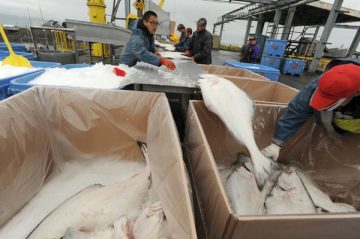 As Alaska’s iconic halibut fishery wraps up this week, stakeholders are holding their breath to learn if the catch limit might ratchet up slightly once again in 2017. Meanwhile, prices for hard-to-get shares of the halibut catch are jaw-dropping. The halibut fishery ends Monday for nearly 2,000 longliners who hold halibut IFQs (Individual Fishing Quotas). The Alaska fishery will produce a catch of more than 20 million pounds if the fleet reaches its limit. Last year, the halibut haul was worth nearly $110 million at the Alaska docks. For the first time in several decades, the coast-wide Pacific halibut harvest numbers increased this year by 2.3 percent to nearly 30 million pounds. Along with Alaska, the eight-month fishery includes the Pacific Coast states and British Columbia. Read the story here 09:07
As Alaska’s iconic halibut fishery wraps up this week, stakeholders are holding their breath to learn if the catch limit might ratchet up slightly once again in 2017. Meanwhile, prices for hard-to-get shares of the halibut catch are jaw-dropping. The halibut fishery ends Monday for nearly 2,000 longliners who hold halibut IFQs (Individual Fishing Quotas). The Alaska fishery will produce a catch of more than 20 million pounds if the fleet reaches its limit. Last year, the halibut haul was worth nearly $110 million at the Alaska docks. For the first time in several decades, the coast-wide Pacific halibut harvest numbers increased this year by 2.3 percent to nearly 30 million pounds. Along with Alaska, the eight-month fishery includes the Pacific Coast states and British Columbia. Read the story here 09:07
NPFMC progresses with halibut issues
 Federal fisheries managers took additional steps at their October meeting on halibut issues ranging from leasing of individual fishery shares to prohibited species catch limits, and a review of the halibut/sablefish IFQ program. None of these issues, which were in the early stage of consideration, are on draft agendas for upcoming council meetings Dec. 6-14 in Anchorage or Jan. 30-Feb. 7 in Seattle, although final action on two other halibut issues is anticipated in December. They are charter halibut management measures and the charter halibut recreational quota entry program. On the matter of IFQ leasing of quota shares, which was up for an initial review, the council expanded its suite of options for proposed action to allow leasing of halibut IFQ to community development quota groups in low abundance years. Read the rest here 14:36
Federal fisheries managers took additional steps at their October meeting on halibut issues ranging from leasing of individual fishery shares to prohibited species catch limits, and a review of the halibut/sablefish IFQ program. None of these issues, which were in the early stage of consideration, are on draft agendas for upcoming council meetings Dec. 6-14 in Anchorage or Jan. 30-Feb. 7 in Seattle, although final action on two other halibut issues is anticipated in December. They are charter halibut management measures and the charter halibut recreational quota entry program. On the matter of IFQ leasing of quota shares, which was up for an initial review, the council expanded its suite of options for proposed action to allow leasing of halibut IFQ to community development quota groups in low abundance years. Read the rest here 14:36
Redistribution of Quota has P.E.I. halibut fishermen disappointed with lowered catch
 P.E.I. fishermen will have less halibut to catch this year after a last-minute decision by Fisheries and Oceans Canada to redistribute the quota. The decision means the Island’s share of the allowed catch will drop down to 40 tonnnes from 46 tonnes — a 13-per-cent decrease — in a fishery that opens Sunday. “We’re still in a state of shock,” said the chair of the P.E.I. Fishermen’s Association’s groundfish advisory board, Tony Carter. “We’re back to ground zero, basically.” All three Maritime provinces saw their quotas drop in the DFO decision Monday, while fishermen in Newfoundland and Labrador and Quebec got an increase. This reverses a decision made last year by former federal fisheries minister and Island MP Gail Shea. Read the rest here 09:35
P.E.I. fishermen will have less halibut to catch this year after a last-minute decision by Fisheries and Oceans Canada to redistribute the quota. The decision means the Island’s share of the allowed catch will drop down to 40 tonnnes from 46 tonnes — a 13-per-cent decrease — in a fishery that opens Sunday. “We’re still in a state of shock,” said the chair of the P.E.I. Fishermen’s Association’s groundfish advisory board, Tony Carter. “We’re back to ground zero, basically.” All three Maritime provinces saw their quotas drop in the DFO decision Monday, while fishermen in Newfoundland and Labrador and Quebec got an increase. This reverses a decision made last year by former federal fisheries minister and Island MP Gail Shea. Read the rest here 09:35
Just for the Halibut – Quota in the Gulf of St. Lawrence
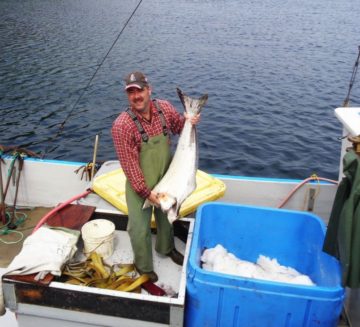 While most attention these days is focused on who should should get how much of a share of northern shrimp, the Department of Fisheries and Oceans is trying to decide how the Atlantic halibut quota in the Gulf should be shared between fishermen in the five Atlantic provinces. These days, fishermen who ply the waters in the Gulf of St. Lawrence, fetch anywhere from $6 to $7 a pound for halibut they catch on hook and line. The quota in the Gulf of St. Lawrence is limited — just over 800 tonnes for the past two fishing seasons — and is shared up between five provinces. Read the rest here 08:58
While most attention these days is focused on who should should get how much of a share of northern shrimp, the Department of Fisheries and Oceans is trying to decide how the Atlantic halibut quota in the Gulf should be shared between fishermen in the five Atlantic provinces. These days, fishermen who ply the waters in the Gulf of St. Lawrence, fetch anywhere from $6 to $7 a pound for halibut they catch on hook and line. The quota in the Gulf of St. Lawrence is limited — just over 800 tonnes for the past two fishing seasons — and is shared up between five provinces. Read the rest here 08:58
Halibut season opens; SE fleet already lands 260,000 lbs.
 A little more than three days into the 2016 halibut season, Area 2C, Southeast Alaska, has had the fleet hitting it the hardest. Nearly 260,000 pounds had been landed in Southeast, compared to less than 50,000 in Area 3A, Central Gulf of Alaska, and no activity in other areas of the state. The state-wide directed commercial halibut quota is just over 17 million pounds. Prices have started about where they left off last year, with Kodiak reportedly at $6.25 for fish under 20 pounds, $6.50 for fish 20 to 40 pounds, and $6.85 for fish 40 pounds and up. Read the rest here 10:06
A little more than three days into the 2016 halibut season, Area 2C, Southeast Alaska, has had the fleet hitting it the hardest. Nearly 260,000 pounds had been landed in Southeast, compared to less than 50,000 in Area 3A, Central Gulf of Alaska, and no activity in other areas of the state. The state-wide directed commercial halibut quota is just over 17 million pounds. Prices have started about where they left off last year, with Kodiak reportedly at $6.25 for fish under 20 pounds, $6.50 for fish 20 to 40 pounds, and $6.85 for fish 40 pounds and up. Read the rest here 10:06
YEAR IN REVIEW: Federal agenda dominated by halibut bycatch concerns
Halibut  dominated the federal fisheries process in 2015, with each sector fighting over reduced allocations. Directed halibut fishermen in the North Pacific have watched their quotas drop while the trawl industry prosecuting Bering Sea groundfish has had a relatively static bycatch limit for 20 years. The North Pacific Fishery Management Council governs bycatch while the International Pacific Halibut Commission governs directed removals, and the two have not coordinated on the decline in harvestable halibut biomass. Read the article here 08:38
dominated the federal fisheries process in 2015, with each sector fighting over reduced allocations. Directed halibut fishermen in the North Pacific have watched their quotas drop while the trawl industry prosecuting Bering Sea groundfish has had a relatively static bycatch limit for 20 years. The North Pacific Fishery Management Council governs bycatch while the International Pacific Halibut Commission governs directed removals, and the two have not coordinated on the decline in harvestable halibut biomass. Read the article here 08:38
What happens to those halibut after being caught?
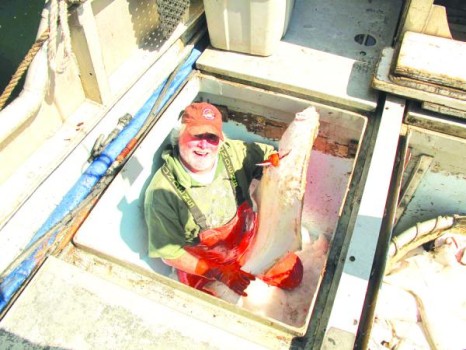 When you pull over Baycrest Hill and catch a glimpse of the Spit, it almost looks like a hook dangling in the gaping mouth of Kachemak Bay.And then you pass the sign proclaiming Homer to be the “Halibut Fishing Capital of the World.” Last year, 2.8 million pounds of halibut came over the Homer dock. That was 18 percent of total commercial halibut landings in the United States, and the most poundage of any Alaska port. Which makes the Homer dock a busy place. Here are the people involved in bringing one meal to the table: Dave Fry, commercial fisherman, Ray Starzec, individual quota holder, Erica Walli, deckhand,,, Read the rest here 13:51
When you pull over Baycrest Hill and catch a glimpse of the Spit, it almost looks like a hook dangling in the gaping mouth of Kachemak Bay.And then you pass the sign proclaiming Homer to be the “Halibut Fishing Capital of the World.” Last year, 2.8 million pounds of halibut came over the Homer dock. That was 18 percent of total commercial halibut landings in the United States, and the most poundage of any Alaska port. Which makes the Homer dock a busy place. Here are the people involved in bringing one meal to the table: Dave Fry, commercial fisherman, Ray Starzec, individual quota holder, Erica Walli, deckhand,,, Read the rest here 13:51
Bad weather keeping halibut boats tied to dock, and various other fish news reports
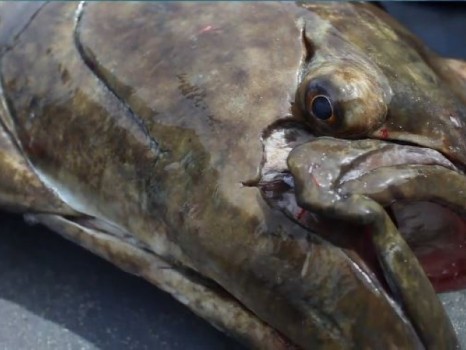 Ten days into the 2015 halibut season, prices are beginning to fall slightly, but production is nearly nonexistent, at least in the central Gulf of Alaska, Area 3A. Stormy weather and big tides have conspired to make a slow start to the season in Area 3A, with the weather continuing to keep boats in port this week. Boats in the area delivered only 146,000 pounds from 26 deliveries during the first 10 days, although deliveries in Southeast Alaska, Area 2C, topped out at 420,000 pounds from 62 deliveries. Read the rest here 13:58
Ten days into the 2015 halibut season, prices are beginning to fall slightly, but production is nearly nonexistent, at least in the central Gulf of Alaska, Area 3A. Stormy weather and big tides have conspired to make a slow start to the season in Area 3A, with the weather continuing to keep boats in port this week. Boats in the area delivered only 146,000 pounds from 26 deliveries during the first 10 days, although deliveries in Southeast Alaska, Area 2C, topped out at 420,000 pounds from 62 deliveries. Read the rest here 13:58
Fresh Halibut Coming Soon! Commercial Pacific Halibut Fishery To Open March 14, 2015.
 “Our fleet has staged to the grounds and will commence fishing operations when the season opens on March 14th at 12:00pm,” says Lyle Pierce, master of the fishing vessel Bold Pursuit and President of the Pacific Halibut Management Association of BC (PHMA), an organization representing commercial halibut fishermen on Canada’s Pacific coast.Each year, the commercial halibut fishery provides millions of meals to Canadians who enjoy commercially-caught halibut in restaurants or purchase it at retail outlets to consume at home. “That’s what commercial fishermen do,” notes Pierce, “we provide food for Canada and the world and jobs and incomes for British Columbians.” Read the rest here 12:43
“Our fleet has staged to the grounds and will commence fishing operations when the season opens on March 14th at 12:00pm,” says Lyle Pierce, master of the fishing vessel Bold Pursuit and President of the Pacific Halibut Management Association of BC (PHMA), an organization representing commercial halibut fishermen on Canada’s Pacific coast.Each year, the commercial halibut fishery provides millions of meals to Canadians who enjoy commercially-caught halibut in restaurants or purchase it at retail outlets to consume at home. “That’s what commercial fishermen do,” notes Pierce, “we provide food for Canada and the world and jobs and incomes for British Columbians.” Read the rest here 12:43
Alaska needs a major halibut bycatch reduction, by David Bayes
I’ve watched as longline and charter halibut allocations have declined steadily, and have long awaited the day when regulators would hold trawlers accountable for their waste.  Though the halibut stocks in the Bering Sea may seem unimportant to Anchorage and the Peninsula, the Northeastern migration of growing halibut means problems that begin in the Bering Sea will soon enough carry through to our area. Though the Bering Sea is a remote region, what precedent does Alaska set by allowing this blatant abuse of one of our most valuable and symbolic resources? Read the rest here 11:11
Though the halibut stocks in the Bering Sea may seem unimportant to Anchorage and the Peninsula, the Northeastern migration of growing halibut means problems that begin in the Bering Sea will soon enough carry through to our area. Though the Bering Sea is a remote region, what precedent does Alaska set by allowing this blatant abuse of one of our most valuable and symbolic resources? Read the rest here 11:11
Canada-U.S. delegates meet in B.C. to discuss halibut ‘wastage’ in Bering Sea
 You might say it’s a story about the fish that didn’t get away. Fishermen in the Bering Sea off the coast of Alaska are tossing back millions of kilograms of dead halibut they’ve caught unintentionally while scooping up other stocks. The longtime practice, known as bycatch, has become the focus of intense scrutiny in Alaska and will be the subject of debate at a meeting at month’s end of the International Pacific Halibut Commission in Vancouver. Read the rest here 11:13
You might say it’s a story about the fish that didn’t get away. Fishermen in the Bering Sea off the coast of Alaska are tossing back millions of kilograms of dead halibut they’ve caught unintentionally while scooping up other stocks. The longtime practice, known as bycatch, has become the focus of intense scrutiny in Alaska and will be the subject of debate at a meeting at month’s end of the International Pacific Halibut Commission in Vancouver. Read the rest here 11:13
More info on AK IFQ cost recovery programs for halibut, sablefish, Bering Sea crab
 Those who hold quota shares of Alaska halibut, sablefish and Bering Sea crab pay a fee to the federal government for costs of managing and enforcing the fisheries. Information from Troie Zuniga, Fee Coordinator Operations and Management Division
Those who hold quota shares of Alaska halibut, sablefish and Bering Sea crab pay a fee to the federal government for costs of managing and enforcing the fisheries. Information from Troie Zuniga, Fee Coordinator Operations and Management Division NOAA Fisheries NMFS – Alaska Region(907) 586-7105 Read the rest here 20:51
Groundfishing aground? The rise and fall of Maine’s offshore fishing industry – Lobster catch keeps going up, up, up
 “I was here from 1989-1996, when we opened up at 4 a.m. and sometimes ran until midnight,” says General Manager Bert Jongerden,,, Now, Portland is a distant third behind New Bedford and Gloucester. The reasons are many, but Jongerden says the Portland Fish Exchange’s fortunes very much have mirrored the rise and fall of New England’s offshore fishing industry over the past 30 years. Read the rest here 11:32
“I was here from 1989-1996, when we opened up at 4 a.m. and sometimes ran until midnight,” says General Manager Bert Jongerden,,, Now, Portland is a distant third behind New Bedford and Gloucester. The reasons are many, but Jongerden says the Portland Fish Exchange’s fortunes very much have mirrored the rise and fall of New England’s offshore fishing industry over the past 30 years. Read the rest here 11:32
Newport halibut landings dominate tri-state commercial activity
NEWPORT — Newport-based commercial fishing boats caught more than half of the 121,881 Pacific halibut harvested in Oregon, Washington and Northern California waters during a 10-hour window last week. Read more here 09:05
Halibut catches down 11% – Early start for fishery
 2014 Pacific Halibut Catch – Here’s the break down of who gets what. HALIBUT FISHERY BEGINS MARCH 8 – ENDS NOVEMBER 7, 2014 Read more here 02:33
2014 Pacific Halibut Catch – Here’s the break down of who gets what. HALIBUT FISHERY BEGINS MARCH 8 – ENDS NOVEMBER 7, 2014 Read more here 02:33
Alaska’s 2013 Commercial Halibut Season Wrap Up – This is Fish Radio. I’m Stephanie Mangini.
 At noon today long liners are retiring their halibut gear for the remainder of 2013. Early numbers show that there was over a million pounds left of the nearly 22 million pound harvest. That could leave quite a hefty sum of fish bucks floating in the water. listen@fishradio 15:51
At noon today long liners are retiring their halibut gear for the remainder of 2013. Early numbers show that there was over a million pounds left of the nearly 22 million pound harvest. That could leave quite a hefty sum of fish bucks floating in the water. listen@fishradio 15:51
Baker | The problem of too much fish – (not just Halibut!)
 If you’ve been listening to the Fisheries Broadcast lately you’ve been hearing about a peculiar problem: Seems there’s too much fish around, and it’s shagging up the fishery. Yes, you read that correctly.,,,,By now you may have heard that I will be replacing the irreplaceable John Furlong in the wheelhouse of The Fisheries Broadcast for the coming year. more@cbcnews09:19:14
If you’ve been listening to the Fisheries Broadcast lately you’ve been hearing about a peculiar problem: Seems there’s too much fish around, and it’s shagging up the fishery. Yes, you read that correctly.,,,,By now you may have heard that I will be replacing the irreplaceable John Furlong in the wheelhouse of The Fisheries Broadcast for the coming year. more@cbcnews09:19:14
Board of Fish does not act on task force proposals
![]() The Alaska Board of Fisheries met last week to look at statewide finfish issues, and took up a proposal submitted by the Upper Cook Inlet Task Force that would have provided new guidelines for the management of Kenai River chinook salmon for the upcoming season. also, The 2013 halibut season opened Saturday to decidedly wintery weather, with gale and storm warnings coupled with heavy freezing spray warnings for most of the Gulf of Alaska. continue reading
The Alaska Board of Fisheries met last week to look at statewide finfish issues, and took up a proposal submitted by the Upper Cook Inlet Task Force that would have provided new guidelines for the management of Kenai River chinook salmon for the upcoming season. also, The 2013 halibut season opened Saturday to decidedly wintery weather, with gale and storm warnings coupled with heavy freezing spray warnings for most of the Gulf of Alaska. continue reading
Alaska’s Halibut, Black Cod Harvest Season Opens Tomorrow
Grocers can start preparing their seafood departments for Alaska’s wild halibut and black cod (sablefish), for which harvest season opens tomorrow, March 23. Statewide Total Allowable Catch (TAC) limits for Alaska halibut and black cod a![]() re set at over 23 million pounds and 35 million pounds respectively. continue
re set at over 23 million pounds and 35 million pounds respectively. continue
Good news, bad news for Alaska commercial fishermen in 2013
Depending on their quarry, some commercial fishermen working Alaska waters can expect a productive year in 2013, while others will face tighter limits. The North Pacific Fishery Management Council has released its 2013 catch limits and the Alaska Department of Fish and Game announced its predictions on some major salmon runs. Read More


































